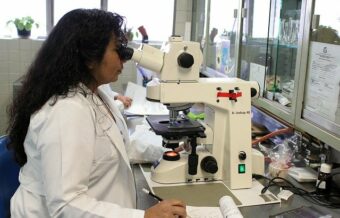The Facts about THC and CBD have had intense discussions about the therapeutic and beneficial qualities of cannabis. Although the many compounds cannabis Sativa plants produce, only two cannabinoids—THC and CBD. After many years of research, scientists studying the effects of marijuana made several significant discoveries.

They identified the active ingredient in marijuana and discovered where and how it works in the brain—via a new system called the endocannabinoid (EC) system.
The EC system—named after the marijuana plant. Cannabis sativa and its active ingredient delta-9-tetrahydrocannabinol (THC)—is a unique communications system in the brain and body that affects many essential functions, including how a person feels, moves, and reacts.
Also, in light of current circumstances, THCA and CBDA, the inert acidic types of THC and CBD, are the most abundant element generated by cannabis plants. Making them both the most financially feasible and the least demanding to investigate.

Studies that explore the possible clinical uses of these cannabinoids keep on connecting their adaptable remedial viability to their capacity to lessen irritation all through the body. However, THC and CBD aren’t solitary mixtures with mitigating properties.
They may not be the usual effective pain relievers cannabis has to bring to the table. That reputation may have a place with an alternate group of cannabis concentrates: flavonoids.
You may have recognized flavonoids previously if you’ve at any point studied the medical advantages of certain “superfoods.” A few examinations have shown how plant flavonoids offer people (and different creatures) cell reinforcement, anticancer and neuroprotective properties.
Yet, distinguishing the medical advantages of cannabis flavonoids is just essential for the condition. The other part is sorting out to make drugs with them.
Furthermore, flavonoids in such low amounts in cannabis plants make that subsequent stage especially hard. Because of a continued push by scientists, we have taken a big step forward.
Scientists have analyzed how cannabis plants produce those pain compounds. This means drugmakers are one bit nearer to creating what could be the most secure and best relief from discomfort medications ever.

Cannabis THC CBD
Cannflavin An and Cannflavin B: Painkillers
Even though THC, CBD, and other major cannabinoids, cannabis plants produce plenty of specific chemical compounds.
Scientists believe the plants have a significant batch of clinical and therapeutic applications. Of those chemical compounds, one group seems specific to produce effective mitigating results in animals. Researchers call that group “flavonoids.”
Flavonoids exist in essentially every plant. However, in 1981, analysts found two flavonoids that are specific to Cannabis sativa.
Their names are cannflavin An and cannflavin B, and they quickly inspired a rush of interest among plant experts.
In a recent report, scientists found that cannflavins An and B gave mitigating benefits that were roughly multiple times more successful than headache medicine.
Believe it or not, on multiple occasions better than quite possibly the most well-known over-the-counter pain relievers.
Twenty years after the fact, in 2014, analysts issued a study explaining that better-than-ibuprofen viability.
They found that cannflavins An and B attempted to obstruct creating two synthetic compounds that advance irritation in animal cells.
Yet, regardless of these significant discoveries, nobody focused on how Cannabis sativa incorporated these non-psychoactive cannflavins. But, that is, for a group of professionals with the College of Guelph in Canada.

THC and CBD Could Replace Prescriptions
Since limits to cannabis research are declining in the wake of gaining sanctioning, researchers are more capable than any other time studying the big questions of Cannabis sativa.
Compared with our understanding of different plants and their therapeutic properties, our insight into cannabis is feeble, to say the least.
For quite a long time, scientists have examined the advantages of flavonoids and how different plants create them.
In any case, we’re simply now starting to understand the essential and complex metabolic pathways that give cannabis such pharmacological potential.
Also, perhaps the primary ongoing leap forwards in that field of exploration is clarifying the biosynthetic pathway for cannflavin An and B.
All in all, specialists at long last got an opportunity to sort out how cannabis plants make these more powerful than-ibuprofen compounds. Also, they did precisely that.
Then, they recorded a patent. Furthermore, from that point forward, clinical cannabis organization Anahit Worldwide authorized the patent to start investigating how to deliver business relief from discomfort items with cannflavins An and B. Such drugs could change how we treat pain.
Tariq Akhtar, Colleague Educator of Atomic and Cell Science at the College of Guelph and co-writer of the research that found how cannabis plants produce cannflavins An and B stated: “What’s fascinating about the elements in cannabis is that they really stop inflamation at the source,” “Furthermore, most conventional products don’t have the toxins that is associated with over-the-counter pain prescription drugs.”

Cannabis: THC and CBD Safer Than Medicine
Amid the continuous obliteration of the narcotic emergency, tracking down a feasible elective pain drug without the dangers and negative symptoms of numerous medication pain prescriptions is a dreadful test facing the medical services business.
Conclusion
Be that as it may, much over-the-counter pain meds like headache medicine, ibuprofen, and acetaminophen when taken daily or in the mix with liquor can prompt kidney infection and stomach and liver issues.
Cannflavins, apparently, don’t harm organs; instead, they treat the aggravation at the source.
Furthermore, given the available research, cannflavins do it safer and more successfully than pain medicine.
Where do you think cannabis is headed in the next five years? How do you feel how cannabis stops global warming. Why the Next 10 Years of Cannabis Will Smash the Last 10.
Take your time and compare price, quality, and please notice guaranteed safe check out.
Thank you again for visiting Hemp Medical Benefits and for allowing us to serve you. So please accept my genuine thank you. You are always welcome back.
Cheers,
Kevin
kevin@hempmedicalbenefits.com
This content is not intended to be a substitute for professional medical advice, diagnosis, or treatment. Always seek your physician’s advice or other qualified health providers with any questions regarding a medical condition.
